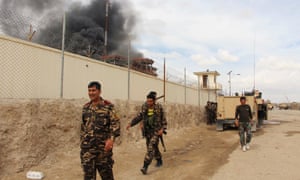by KYLE MIZOKAMI
In appearance it is very powerful, but in reality it is nothing to be afraid of—it is a paper tiger.—Mao Zedong on the United States, 1956
China’s rise over the past 30 years has been nothing short of spectacular.
After decades of double-digit growth, today China is the world’s second largest economy—and possesses an increasingly sophisticated military that’s among the planet’s most powerful. Despite China bordering a number of unstable countries, its borders are secure.
That wasn’t always the case. In 2,000 years, China has suffered invasions,revolutions and humiliations from the outside world—plus its own internal rebellions. It has been brutalized, conquered and colonized.
No longer. China’s defense spending has increased tenfold in 25 years. Beijing is building a powerful blue-water navy, developing stealth fighters and carefully experimenting with peacekeeping and expeditionary operations.
China’s military buildup, along with an aggressive foreign policy, has inspired a fair amount of alarm in the West. Some American policymakers consider Beijing to be Washington’s only “near-peer competitor”—in other words, the only country with the military might to actually beat the U.S. military in certain circumstances.
But they’re wrong. Even after decades of expensive rearmament, China is a paper dragon—a version of what Mao Zedong wrongly claimed the United States was … in 1956.
China’s military budget has grown by double-digits year after year, but inflation has eaten away at the increases. China’s army, navy, air force and missile command are wracked by corruption—and their weapons are, by and large, still greatly inferior to Western equivalents.
Yes, the People’s Liberation Army is slowly becoming more technologically advanced. But that doesn’t mean Beijing can mobilize its armed forces for global missions. Unlike the world’s main expeditionary powers—the United States and the U.K., to name two—China is surrounded by potential enemies.
Russia, Japan and India are all neighbors … and historic adversaries. China’s aggressive foreign policy targeting smaller states isn’t encouraging submission but resistance, as countries such as The Philippines and Vietnam ally with the United States, Japan and India.
China’s other neighbors are weak or failed states, such as Pakistan and North Korea. Their instability—or their outright collapse—could have serious security repercussions for China, and help explain why Beijing lavishes funds on its armed forces.


















